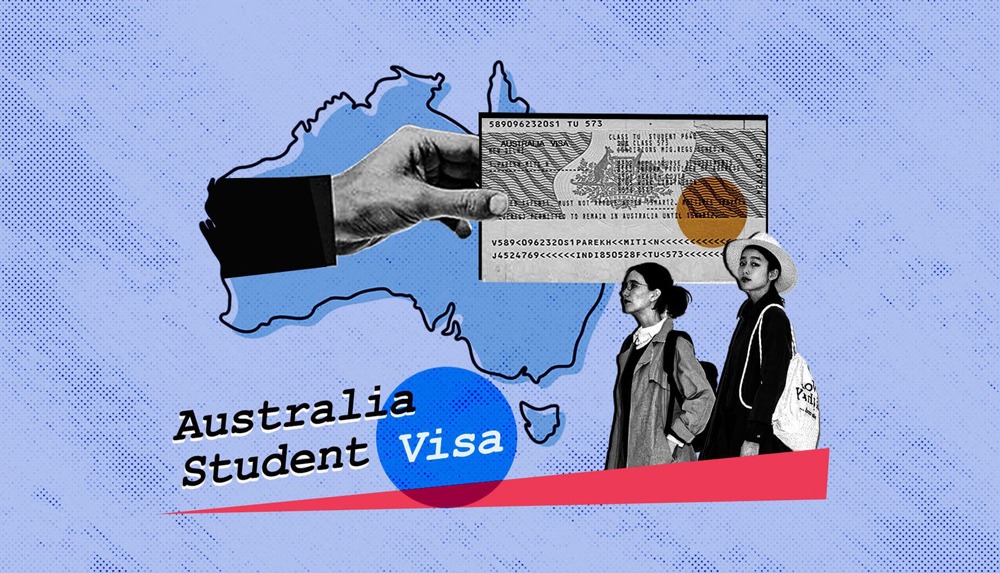In a move that has sent ripples through the global education community, Australia has announced a significant increase in foreign student visa fees. The decision to double these fees has sparked widespread debate and concern among prospective students, educational institutions, and policymakers alike. As one of the top destinations for international students, Australia’s new policy could have far-reaching implications for its education sector and economy. This article delves into the reasons behind the fee hike, its potential impact, and the reactions from various stakeholders.
The New Policy: A Breakdown
Effective from July 1, 2024, the cost of applying for a foreign student visa to Australia has doubled. Previously, the visa fee stood at AUD 630, but with the new policy, it has risen to AUD 1,260. This substantial increase aims to address the growing administrative costs and the need for enhanced services in managing the influx of international students.
Reasons Behind the Increase
The Australian government has cited several reasons for the increase in foreign student visa fees:
- Administrative Costs: Managing the large volume of visa applications requires significant resources. The fee hike is intended to cover these administrative expenses and improve the overall efficiency of the visa processing system.
- Enhanced Services: The additional revenue from the increased fees will be allocated towards enhancing services for international students, including faster processing times, improved support services, and better integration programs.
- Economic Factors: Inflationary pressures have affected various sectors in the global economic environment. The education sector is no exception, and the fee increase reflects the rising costs associated with maintaining high-quality services for foreign students.
Impact on Prospective Students
The doubling of foreign student visa fees in Australia has raised concerns among prospective students worldwide. For many, Australia has been a preferred destination due to its high-quality education system, vibrant multicultural environment, and opportunities for post-study work. However, the increased cost could make Australia less accessible for students from developing countries or those with limited financial resources.
Financial Strain on Students
For many international students, the visa fee is just one component of the overall cost of studying abroad. Tuition fees, living expenses, and travel costs already pose significant financial burdens. Doubling the visa fee adds an extra layer of financial strain, potentially deterring some students from choosing Australia as their study destination.
Scholarships and Financial Aid
In response to the increased visa fees, educational institutions and governments may need to re-evaluate their scholarship and financial aid programs. Ensuring that deserving students are not priced out of studying in Australia will require a concerted effort to provide more generous financial support and targeted scholarships.
Impact on Educational Institutions
Australian universities and colleges have long relied on international students as a vital source of revenue. The doubling of foreign student visa fees could have several implications for these institutions.
Enrollment Numbers
There is a concern that the higher visa fees may lead to a decline in enrollment numbers. Prospective students may opt for other countries with more affordable visa fees, such as Canada or the United Kingdom. A significant drop in international student enrollments could impact the financial stability of some institutions, particularly those heavily dependent on tuition from foreign students.
Diversity and Cultural Exchange
International students contribute to the cultural diversity of Australian campuses, enriching the educational experience for all students. A decrease in the number of foreign students could diminish this diversity, affecting the vibrant multicultural atmosphere that Australian universities are known for.
Reactions from Stakeholders
The announcement of the fee increase has elicited varied reactions from different stakeholders, including students, educational institutions, and policymakers.
Student Reactions
Many prospective and current international students have expressed concern and disappointment over the fee hike. Social media platforms have been flooded with reactions from students worried about the additional financial burden. Some have called for the Australian government to reconsider the decision, arguing that it could deter talented individuals from pursuing their education in Australia.
Institutional Reactions
Educational institutions have also voiced their concerns. Universities Australia, the peak body representing the country’s universities, has urged the government to consider the potential impact on international student numbers. They have called for a comprehensive review of the policy and the introduction of measures to mitigate any negative effects on student enrollment.
Government Response
The Australian government has defended its decision, emphasizing the need to cover the increasing costs associated with processing visa applications and providing adequate support for international students. They have highlighted that the fee increase will lead to better services and a more efficient visa processing system, ultimately benefiting students in the long run.
Global Competition for International Students
Australia’s decision to double foreign student visa fees comes at a time when global competition for international students is intensifying. Countries like Canada, the United Kingdom, and the United States are actively seeking to attract foreign students with competitive visa policies and attractive post-study work opportunities.
Comparative Analysis
- Canada: Known for its welcoming immigration policies and relatively affordable tuition fees, Canada has become a top choice for international students. The country offers post-study work permits that make it easier for graduates to gain work experience and eventually transition to permanent residency.
- United Kingdom: The UK has introduced several measures to attract international students, including the Graduate Route, which allows students to stay and work in the country for up to two years after completing their studies. The visa fee in the UK is also lower compared to Australia’s new rates.
- United States: Despite its higher tuition fees, the US remains a popular destination due to its prestigious institutions and diverse opportunities. The Optional Practical Training (OPT) program offers international students the chance to work in their field of study for up to three years after graduation.
The Way Forward
The doubling of foreign student visa fees in Australia represents a significant shift in the country’s approach to managing international education. While the policy aims to address administrative costs and enhance services, it also poses challenges for prospective students and educational institutions.
Recommendations for Students
- Plan Financially: Prospective students should thoroughly research and plan their finances, taking into account the increased visa fees and other associated costs.
- Explore Scholarships: Look for scholarships and financial aid opportunities that can help offset the additional expenses. Many institutions offer scholarships specifically for international students.
- Seek Advice: Consult with education advisors and institutions to understand the full implications of the fee increase and explore alternative options if necessary.
Recommendations for Institutions
- Enhance Support: Institutions should enhance their support services for international students, ensuring they receive the assistance they need to navigate the visa process and settle into their new environment.
- Advocate for Students: Engage with policymakers to advocate for measures that can mitigate the financial impact on students, such as increased scholarship funding or phased fee increases.
- Promote Value: To continue attracting international students, highlight the unique advantages of studying in Australia, such as high-quality education, cultural diversity, and post-study work opportunities.
Australia’s decision to double foreign student visa fees marks a significant development in the landscape of international education. While the policy aims to cover administrative costs and enhance services, it also raises concerns about accessibility and affordability for prospective students. The global competition for international students is fierce, and Australia’s new fee structure could influence students’ choices in favor of other destinations.
As stakeholders navigate this new reality, a collaborative approach will be essential to ensure that Australia remains a top choice for international education, balancing the need for financial sustainability with the goal of maintaining a vibrant and diverse student community.
The increased visa fees underscore the importance of careful financial planning and seeking available support for students considering Australia as their study destination. Institutions must also adapt and advocate for measures that support their international student populations. As the global education sector evolves, Australia’s ability to attract and retain international students will depend on its commitment to providing value and support despite the rising costs.




















